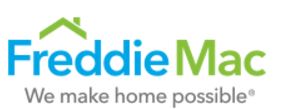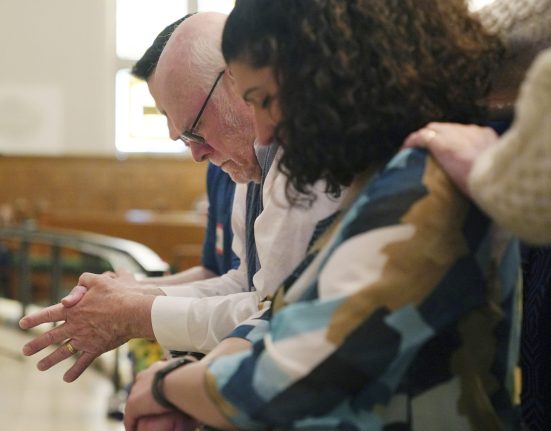Philanthropic funders have been increasingly focused not just on how their grants can make an impact, but on how their invested assets can also advance their missions. One important component of that question is who, exactly, is making the investment decisions.
As part of its own growing commitment to impact investing, one L.A.-based foundation took a closer look at its investment practices and decided to make some changes. Coming out of that process, the Goldhirsh Foundation recently announced a new, all-female investment committee — Shana Barghouti, Natasha Case, Celestine Schnugg and Ruth Wernig.
“We decided on these four wonderful individuals who all bring something very different to the table, all of whom are women, and then we thought, you know, this is actually a great statement to be making,” Roth said. “We thought this will hopefully make people take notice and just kind of change a little bit of way the conventional thinking so that we can be on that road to parity.”
According to Goldhirsh Foundation President Tara Roth, this is a first for an organization of its scope and size and indeed, the investment world is an overwhelmingly male space. Data from All Raise shows that only 15.2% of all VC checkwriters in the U.S. are women, despite research showing that investment committees that include women perform better.
The news prompted us to take another look at Goldhirsh, launched in 2000 by Bernard A. Goldhirsh, founder of Sail and Inc. magazines, as the foundation has made several big directional changes in recent years and is running a number of compelling programs that make it a standout funder in the region. That includes its unique, place-based grantmaking program that asks Angelenos to vote on funding decisions, its early and extensive engagement with artificial intelligence, and ongoing changes to investment practices.
We recently caught up with Tara Roth to see what the funder has been up to.
Aligning its financial capital
On the investment front, work to make its practices more mission-aligned began about two years ago, and the foundation has been doing mission-aligned investments with its entire endowment since early 2023. The foundation has also started looking at making more California-based investments, according to Roth, and working to get closer to the organizations it supports through its grants.
“What we’re doing within our $60-million-plus endowment is to make sure that we’re looking at how any investment we make across any sort of asset class can be in service of the grants we’re making can inform or be informed by that broader vision because we really would just want to align our financial capital to make it all doing the most good possible,” Roth said.
This process led the foundation to its new investment committee. As it was making these changes, Goldhirsh decided it was time to refresh its investment committee and set new policies, term limits and mandates in place, according to Roth.
As the foundation began looking at prospects for its new investment committee, it found that there were a lot of women that the foundation had either worked with before or who had served as its mentors, advisors or partners, all of whom had different areas of expertise and skill sets.
The team members draw upon a deep pool of experience. Shana Barghouti is co-chief investor at ReMY Investors. Natasha Case is the cofounder and former CEO of Coolhaus Ice Cream. Celestine Schnugg is the founding managing partner of the early-stage venture capital fund Boom Capital. Ruth Wernig is the former chief investment officer of The California Endowment.
A unique local grants challenge evolves
Goldhirsh’s biggest initiative is its LA2050 Grants Challenge, which funds organizations that work to “make L.A. the best place to connect, learn, live, play and create.”
Instead of the foundation itself deciding what the grants challenge will fund, Goldhirsh puts the power into the hands of the people of Los Angeles. For the past two years, Goldhirsh has asked Angelenos to vote on the issues that matter most to them. In previous iterations, people voted on which nonprofit organizations received funding. Last year’s Grants Challenge received more than 80,000 votes from almost 12,000 people, which led to a total of $2.5 million awarded to 51 organizations.
Now in its 11th year, Goldhirsh is doing things a little differently. In an effort to encourage more people to vote during the challenge, Goldhirsh is pairing outreach work with volunteer efforts in the community.
“Our theme for the Grants Challenge is ‘Who Can? We Can. Who Can? You Can.’ And so [what] we’re really saying is: not only can you use your voice to vote on the issues where Goldhirsh and six or seven other funding partners are going to put their money, but also, you can do so by making a direct impact in your community with a volunteer activation, as well,” Roth said.
Goldhirsh awarded mini-grants of $5,000 to 24 organizations in the county that were hosting volunteer activities. The volunteer organizations in turn are encouraging volunteers to cast their votes for the LA2050 Grants Challenge. According to Roth, about 300 groups applied for the mini-grants. Goldhirsh initially planned to support 12 organizations but increased it to 24, impressed by the quality of the submissions.
“So if you’re at a beach cleanup, you can say, ‘Hey… do you care about a sustainable environment for Los Angeles County? If so, here’s your chance to let your voice be heard in this grants challenge… Why don’t you vote on something that has to do with a sustainable environment?’ So we’re pairing people taking action in their communities with them taking further action [by] telling us where they want us to spend our money,” Roth said.
Goldhirsh itself will be awarding $1 million in grants and its funding partners will be giving out at least $1 million for a total of $2 million, but this number may increase as the challenge goes on. The 10 first-place winners will each receive $75,000. Five second-place winners will receive $50,000, and funding partner awards will distribute additional funding to other organizations of their choosing. Returning funding partners include Conrad N. Hilton Foundation, John N. Calley Foundation, SNAP Foundation, Los Angeles Dodgers Foundation and Elbaz Family Foundation. A new partner — R&S Kayne Foundation — has also joined.
Voting for this year’s challenge opened April 2 and will continue until May 8. Grant applications will open May 15 once the results of the voting are announced.
AI training
Goldhirsh has also been doing work around artificial intelligence, a topic the foundation has been following since 2019. At the end of last year’s LA2050 Grants Challenge, Goldhirsh surveyed grantee organizations’ staffs about how they felt about AI, including what they envisioned for the future, whether they had used it in their work or during development, and whether they had thought about AI-related job displacement in communities they work with.
“We started talking with our board about, how is AI going to impact the work that we’re doing, policies that we want to see upheld, the organizations that are representing voices and forces that may not have a seat at the table? How do we make sure that there is a kind of ethical adoption of AI?” Roth said.
The foundation held convenings around AI alongside other funders and what Roth describes as “movement makers,” which included elected officials, journalists, tech leaders, cultural practitioners, investors and heads of civic institutions. Guests were able to address several related issues, including disability and aging populations, public health, climate change, journalism and misinformation, and education reform, among others.
Goldhirsh then hosted 60 of its LA2050 grantees and its funding partners’ grantees to receive training in AI. “A lot of it was just basic level-setting, like what is generative AI? What are the different tools you can use? How can you use AI today in helping to write a proposal for grant funding, in helping… to calibrate data that’s coming from a survey?” Roth said.
Roth added that the foundation received positive feedback from the session and that it is now in the process of determining how its next steps will take the training to another level and make it more available and accessible to other organizations.
“We’re constantly trying to figure out how to provide the most value to the organizations we financially support, whether it’s via grants or investments or loans,” Roth said.
“We want to make sure that we are providing our grantees and our partner organizations with whatever resources that we can make available to them to empower them… in whatever ways they need.”
Taking risks
Risk is a big topic in philanthropy, with recurring debates over how much risk funders can and should take on, and what that risk should look like. For medium-sized, place-based foundations like Goldhirsh, being able to take risks is part of its strength as a funder.
“I’m not only privileged to do this work, but then to also have a team, my board and the staff, [where] everyone is constantly thinking about how can we improve our work… We feel like it’s almost our responsibility to test and take some risk,” Roth said.
Goldhirsh, for example, invested in the Stockton Economic Empowerment Demonstration (SEED), a guaranteed income pilot project in Stockton, California, which awarded $500 every month for two years to families in the city.
“We also recognize we’re certainly not the largest foundation by any means — we’re not the smallest — but we do have the appetite to go ahead and take a little risk.”







